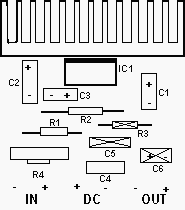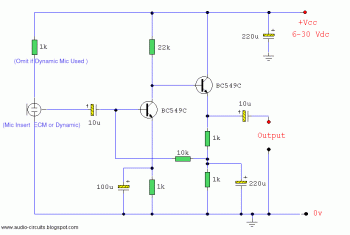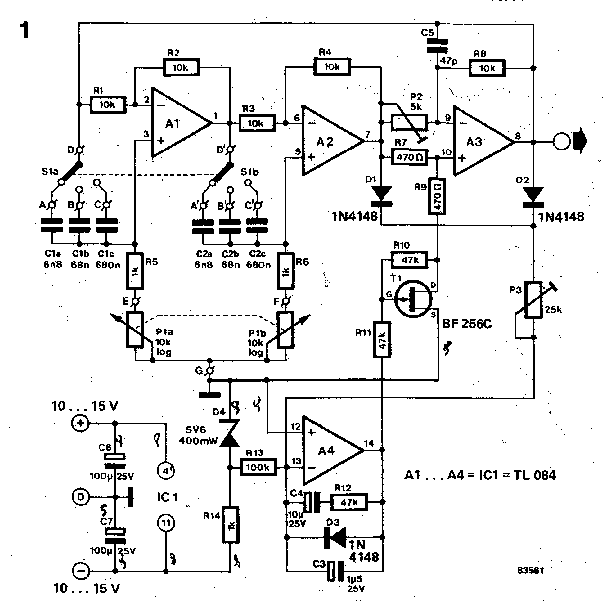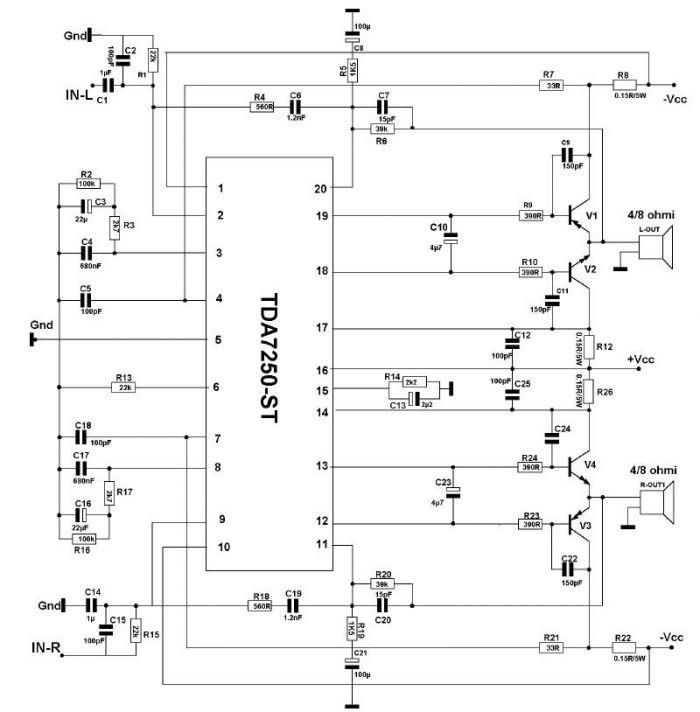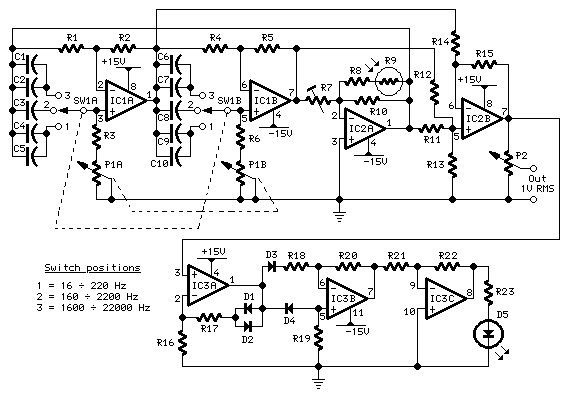
Audio Preamplifier
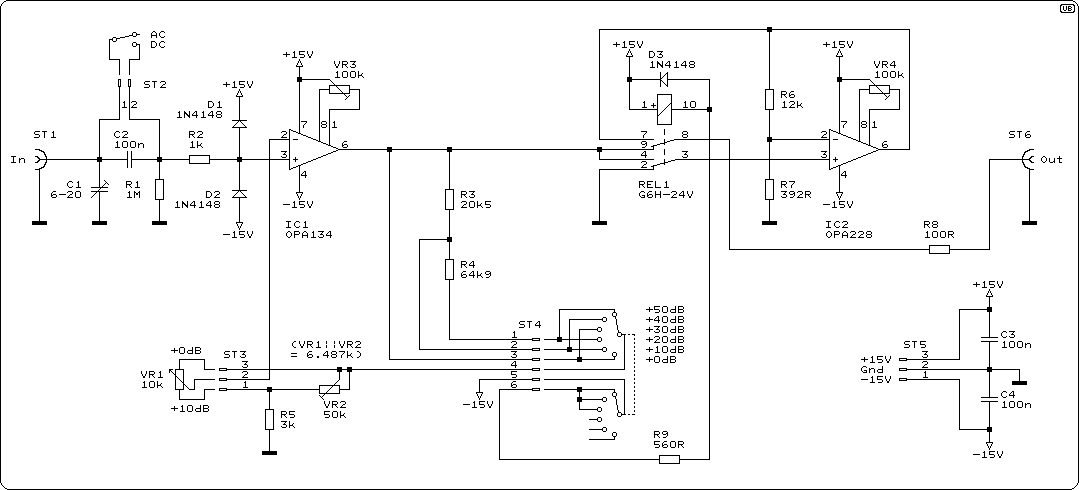
Design and dimensioning of active low-pass and high-pass filters using Sallen-Key and multiple feedback topologies. Spice netlist generator.
Active low-pass and high-pass filters are essential components in signal processing, allowing specific frequency ranges to pass while attenuating others. The Sallen-Key topology is a popular choice for implementing these filters due to its simplicity and effectiveness. It typically consists of operational amplifiers, resistors, and capacitors arranged to achieve desired cutoff frequencies and filter characteristics.
In the design of a low-pass filter, the Sallen-Key configuration utilizes an op-amp in a non-inverting configuration, where the feedback network consists of resistors and capacitors that define the filter's frequency response. The cutoff frequency can be calculated using the formula:
\[ f_c = \frac{1}{2\pi R C} \]
where \( R \) and \( C \) are the resistance and capacitance values in the feedback network. The filter's quality factor (Q) can also be adjusted to control the bandwidth and resonance characteristics.
Conversely, the high-pass filter can also be implemented using the Sallen-Key topology, where the arrangement of components is modified to allow higher frequencies to pass. The design considerations and calculations for the high-pass filter are similar, with adjustments made to the resistor and capacitor values to achieve the desired cutoff frequency.
The multiple feedback topology is another effective method for designing active filters, offering greater flexibility in tuning frequency response and achieving sharper roll-offs. This topology uses multiple feedback paths to enhance performance and can be employed in both low-pass and high-pass configurations.
To facilitate the design process, a SPICE netlist generator can be utilized. This tool automates the creation of SPICE simulation files based on the specified parameters of the filter design, allowing engineers to simulate the filter's performance before physical implementation. By inputting component values and desired specifications, the generator produces a netlist that can be directly used in SPICE simulation software.
Overall, the design and dimensioning of active filters using Sallen-Key and multiple feedback topologies, along with the integration of a SPICE netlist generator, streamline the process of developing effective filtering solutions for various electronic applications.Design and Dimensioning of Aktive Low-Pass and High-Pass Filters. Sallen-Key and Multiple Feedback Topologies, Spice Netlist Generator.. 🔗 External reference
Active low-pass and high-pass filters are essential components in signal processing, allowing specific frequency ranges to pass while attenuating others. The Sallen-Key topology is a popular choice for implementing these filters due to its simplicity and effectiveness. It typically consists of operational amplifiers, resistors, and capacitors arranged to achieve desired cutoff frequencies and filter characteristics.
In the design of a low-pass filter, the Sallen-Key configuration utilizes an op-amp in a non-inverting configuration, where the feedback network consists of resistors and capacitors that define the filter's frequency response. The cutoff frequency can be calculated using the formula:
\[ f_c = \frac{1}{2\pi R C} \]
where \( R \) and \( C \) are the resistance and capacitance values in the feedback network. The filter's quality factor (Q) can also be adjusted to control the bandwidth and resonance characteristics.
Conversely, the high-pass filter can also be implemented using the Sallen-Key topology, where the arrangement of components is modified to allow higher frequencies to pass. The design considerations and calculations for the high-pass filter are similar, with adjustments made to the resistor and capacitor values to achieve the desired cutoff frequency.
The multiple feedback topology is another effective method for designing active filters, offering greater flexibility in tuning frequency response and achieving sharper roll-offs. This topology uses multiple feedback paths to enhance performance and can be employed in both low-pass and high-pass configurations.
To facilitate the design process, a SPICE netlist generator can be utilized. This tool automates the creation of SPICE simulation files based on the specified parameters of the filter design, allowing engineers to simulate the filter's performance before physical implementation. By inputting component values and desired specifications, the generator produces a netlist that can be directly used in SPICE simulation software.
Overall, the design and dimensioning of active filters using Sallen-Key and multiple feedback topologies, along with the integration of a SPICE netlist generator, streamline the process of developing effective filtering solutions for various electronic applications.Design and Dimensioning of Aktive Low-Pass and High-Pass Filters. Sallen-Key and Multiple Feedback Topologies, Spice Netlist Generator.. 🔗 External reference

